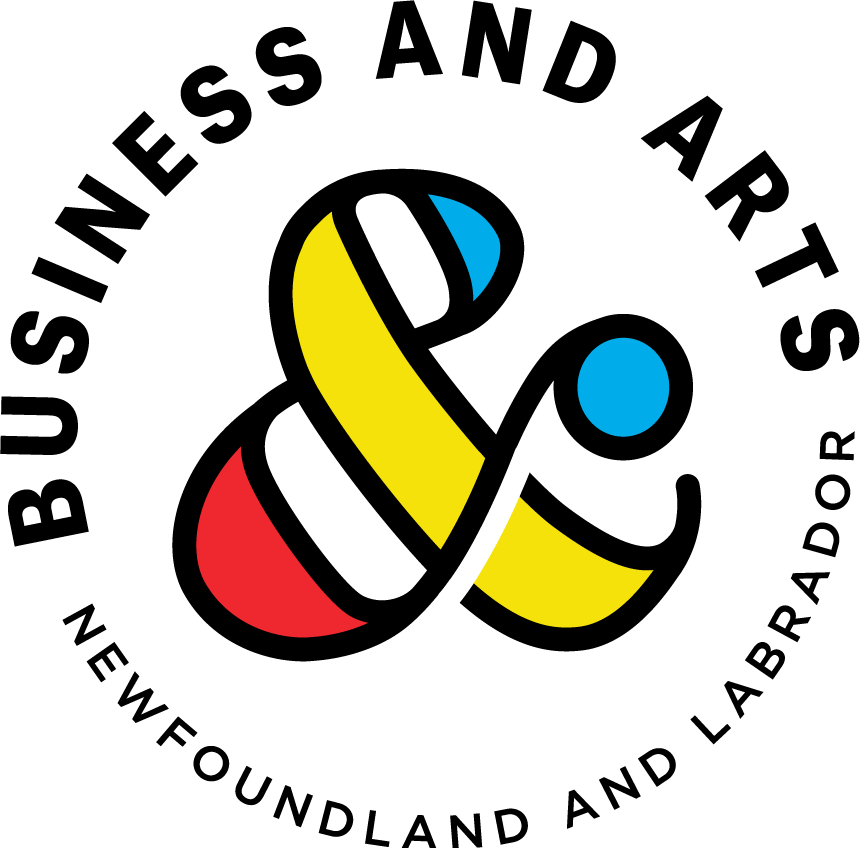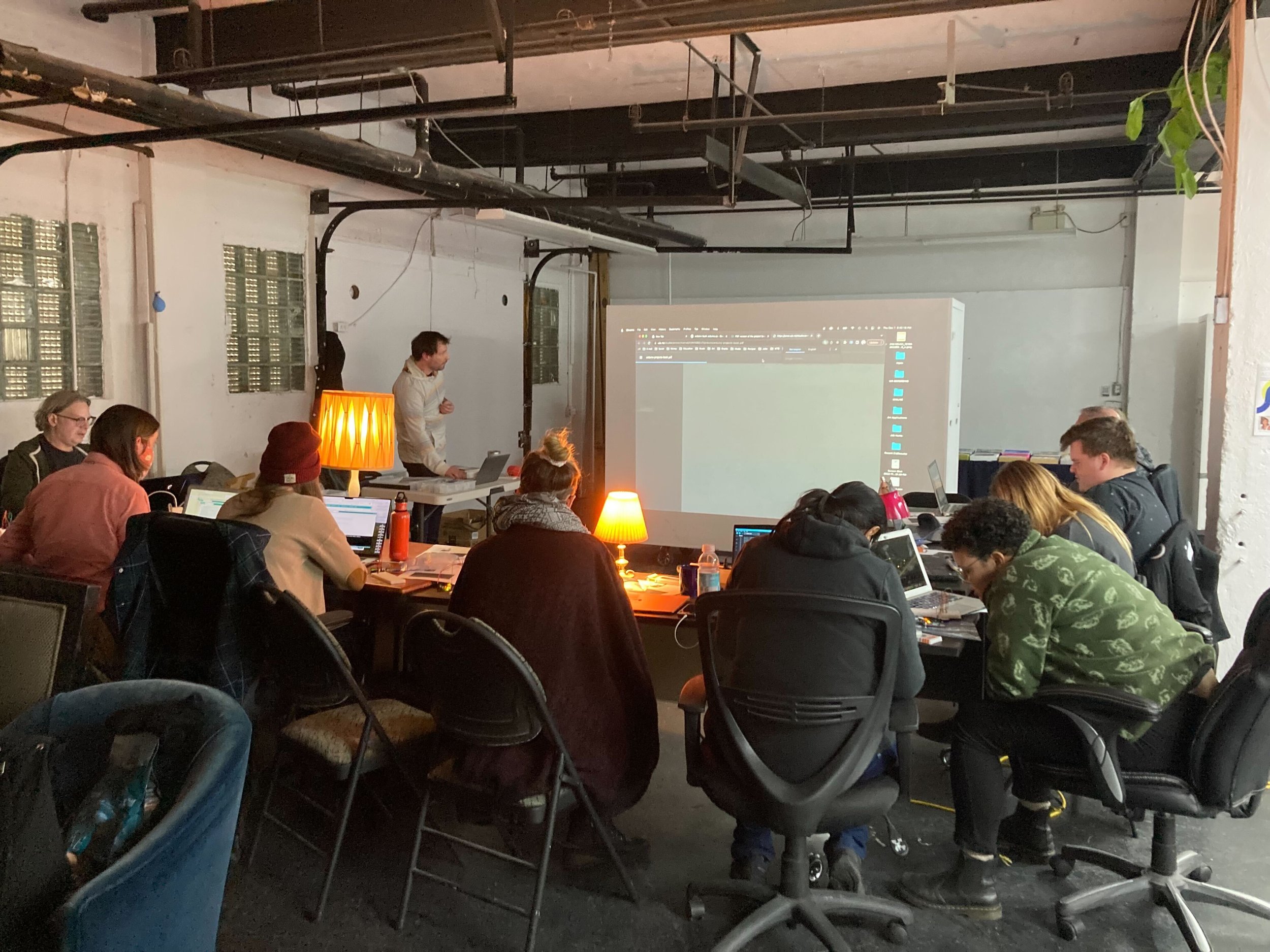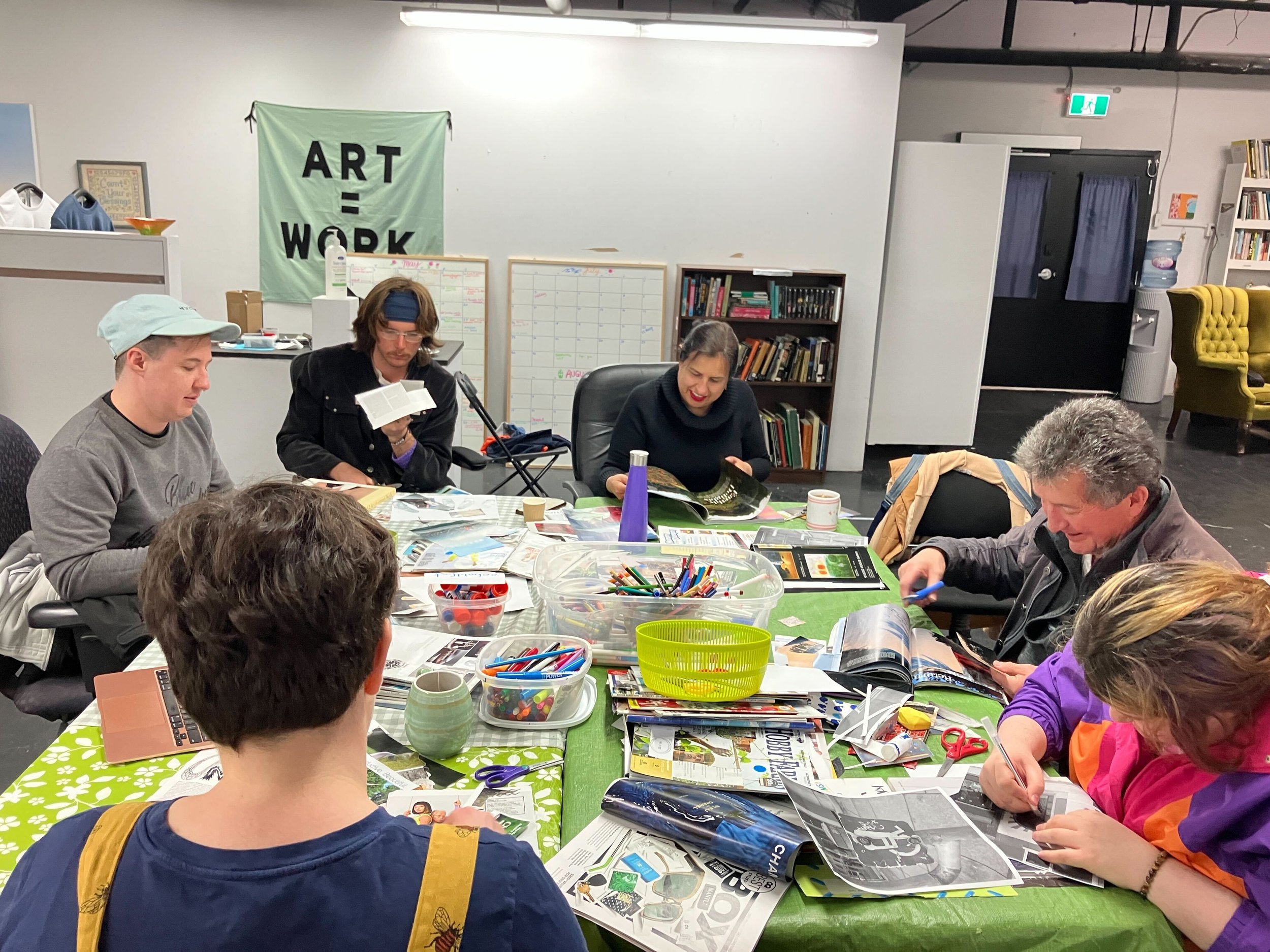Spotlight on Eastern Edge Gallery's Mainframe Project
When you think about making a piece of visual art, what tools come to mind? Perhaps a paintbrush, pencils, clay, charcoals, oil paints, a sketchbook?
Through its Mainframe initiative, Eastern Edge Gallery (EEG), an artist-run centre in downtown St. John's, is expanding ideas of how visual arts are perceived and created, while introducing creators to new tools and technologies to incorporate into their own practices.
These 3D-printed ducks were just one of the things created during the Mainframe project. Photo: Eastern Edge
The project, which ran from June 2022 to July 2023, encouraged artists to engage with different resources and art-making materials and included a range of tools like a 3D printer, VR headset, 360 camera, CNC machine, a graphics tablet, audio and video editing software, and more. These tools are still available and free to use with an EEG membership (EEG also offers free membership in exchange for five hours of volunteer time), aside from the cost of filament for the 3D printer (with the option to bring your own).
Led by then Residency and Digital Project Coordinator Rachel Gilbert, the year-long project also featured six artists-in-residence, free artist talks and 19 free workshops on topics ranging from digital storytelling and generative art to 2D animation and 3D printing, many of which were recorded and shared online (click here to view a list of Mainframe workshops and artist talks).
Artist Michael Lucenkiw presents a workshop called “Other Ways of Knowing: Sonification as Data.” Photo: Eastern Edge
"The most significant benefit of this project was expanding the digital toolkits of local and rural artists, our resident artists that travelled from away, and the community at large. Breaking down barriers and comfort levels around technology by starting from the basics, and bringing in professionals to guide us was a game changer. It was special to be able to offer hands-on experience and experimentation with the tech," says Amanda Penney, Operations Manager at EEG.
Artists were able to avail of 19 free workshops during the Mainframe initiative. Photo: Eastern Edge
In addition to promoting community engagement and expanding participant's digital literacy by building a bridge between art and technology, Mainframe also established partnerships and connections that have extended far beyond the end of the project, says Penney. These include local organizations with expertise in new media tools and tech, and independent makers who specialize in niche areas like 3D printing, bio-sonification and more.
Artist Monica Ila showed participants how to create their own laser-cut shadow puppets during her workshop. Photo: Eastern Edge
"These connections and partnerships increase our capacity to support our local artists and provide them with the resources to continue to explore and experiment with new media tools and tech," Penney says, adding that the project also "allowed us to engage members of the tech community who had previously not considered themselves artists, and build connections between tech-minded makers, and artists who were already in our community."
Artist Ale Monreal shows guests some of her work. Photo: Eastern Edge
Much of the project also focussed on mentorship and building connections between those artists who took part and those in the wider community, Penney adds, ultimately helping the local arts sector grow stronger. Therein lies the true power of the project.
“Artists residencies took place two at a time, with each residency slot hosting two artists working in the same media, one local artist and one visiting artist. Pairing artists in this way created opportunities for them to learn from and with each other. We facilitated paid studio visits inviting mentors working in the same media to visit our artists, and coach them through their projects," Penney says.
Participants enjoyed exploring and creating collages together during one of the workshops. Photo: Eastern Edge
"Many of the connections and relationships built during the residencies are continuing beyond the completion of this project, and we have already seen one of our artists selected for an arts festival with a project that they constructed with one of our community mentors. Building lasting relationships and artist support networks that last beyond one-off special projects was a huge success of this project."







